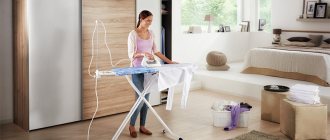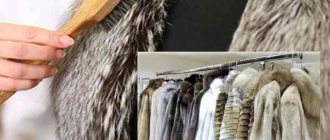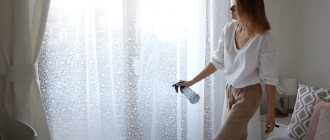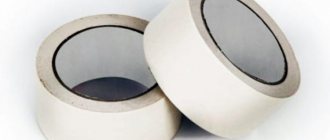Curtains are one of the finishing elements in interior design, which brings comfort and completeness to the room. To make the decor look beautiful and stylish, you need not only to choose the appropriate fabric and shape of the curtains, but also immediately decide on accessories and fittings.
What is the most common way to hang curtains? Should we be content with traditional methods or is it better to give preference to modern options? The design of the window and the entire room as a whole depends on the choice of device for hanging curtains, the method of attaching the fabric, and fasteners.
Types of curtain fastenings - an overview of the best options and ideas in the interior
Curtain fasteners are one of the important details when decorating a window. Therefore, not only the selection of their style, shade and texture, but also proper placement is of great importance. You can secure the curtain in different ways, it all depends on the preferences and taste of the owner. Below are the most accessible and popular methods of attaching curtains to curtain rods and other surfaces.
- Recommendations for choosing fasteners
- Methods for attaching curtains
- Mounting options
- Types of fastenings to the cornice
- Types of fastening without cornice
- Photo gallery
Decorating the top edge of the curtain
The method of preparing the top edge of the curtain depends entirely on the type of fastenings, the type of cornice, the design of the room and the quality of the chosen fabric.
- Kuliska. The top of the curtain is folded and stitched, leaving room for stringing onto a cornice (pipe, rod, string, rod). For greater decorativeness, the top of the drawstring can be decorated with lace, ruffles, and gathered in spectacular folds. Typically, a drawstring is used if the curtains are not planned to be moved frequently along the cornice.
- Curtain braid. A simple and practical way to immediately prepare loops for hooks and decorate the top edge. Cords are laid along the entire length of the braid, with the help of which folds of the desired thickness and splendor are formed. Curtain braid saved housewives from having to sew on eyelets for hooks by hand. The upper edge of the canvas can be decorated using single-row or double-row braid. If you hang it by the loops located in the second row, the drapery will cover the places where it is attached to the cornice - this is very convenient if there is no baguette or decorative strip.
It is not advisable to use curtain tape on dense and too heavy fabrics - the folds will become brittle.
- Ties. This is a type of loop fastening where the loose ends are simply tied to a rod or pipe in the form of knots or bows. Curtains with ties are convenient to hang and remove, and if the length allows, you can adjust the height of the curtains if necessary. Fastenings with ties look especially romantic, so they are appropriate in a girl’s nursery, bedroom, kitchen or room decorated in country style.
- Velcro. It is used when the curtain is not supposed to be moved along the cornice: lambrequins, Roman blinds, Japanese panels. Sometimes curtain rods are sold with ready-made Velcro on a plastic tire. If there is none, it is easy to attach Velcro to the cornice yourself using a construction stapler or glue.
Related article: Grommet tape: purpose and advantages
The design of a window opening requires preliminary preparation in choosing a cornice, fabric, and all decorative elements so that they harmoniously combine with each other and with the overall style of the furniture and room.
Attaching curtains to a string cornice
Let me remind you that in string cornices, a string made of metal or elastic PVC acts as a load-bearing element. But it is still preferable to use a metal string, since PVC can stretch over time and the curtain will sag.
In fact, attaching curtains to string curtain rods is not much different from the options for attaching curtains to tubular curtain rods.
In string curtain rods, the curtain can be secured to rings with hooks, hangers of all types, to eyelets, to loops and to a drawstring. All these methods of attaching curtains are described above.
Perhaps
the most significant difference is that the diameter of the string is significantly smaller than the diameter of the supporting pipe.
Therefore, consider this point when choosing the sizes of rings, hooks, eyelets and loops. You should not choose them too large. It is desirable that all elements are proportional to the diameter of the string. The photo shows examples of attaching curtains to a string cornice.
How to beautifully hang curtains in an ordinary apartment?
The beauty of the curtain is given by the drapery. For correct folds, you need to gather the fabric evenly during hanging or before it, in the process of sewing on the braid.
Correct vertical folds are most easily created using eyelets. But this method is not suitable for every cornice and not for every fabric. You can make folds correctly in different ways.
Single curtain
A thin tulle curtain without eyelets or braid (on clips or mounting rails) can be hung using this technique:
- put an odd number of alligator rings on the cornice;
- hook the 2 upper corners of the curtain, slightly tucking the edges to the wrong side (1-2 cm);
- determine the middle of the curtain and snap the central clip onto it (count and divide the rings equally to the left and right), making a small fold;
- on the left and right sides of the center, repeat the same procedure, each time attaching the middle of a new section, until the entire curtain is laid in neat, uniform folds.
It is better to make the step between the folds about 10 cm. This way the tulle will not sag and will keep its shape well. If 2 central clips are formed on a certain segment, then the distance between them is determined by eye.
Two curtains
Often a thin curtain is complemented with a thick curtain. They must be hung on separate rods or strings, so you should purchase a 2-3-tier cornice. Hanging methods depend on the type of product.
By placing a thick curtain on top of a thin one, you can further decorate the window opening. To do this, use curtain garters - tiebacks. These are beautiful decorative cords or specially cut and sewn fabric ribbons of different styles. They must be secured to the sides of the opening at a height of at least 1.2 m from the floor.
Sometimes they make several grabs at different heights. Short curtains with tiebacks can be tied at the level of the upper corner of the window or at 1/3-1/2 the distance to the window sill. In this case, assemble the curtain on one side of the window. There are many ways to use tiebacks, and you can see them in the photo with examples of interiors.
Elegant decorative tassels
Cords for tying are decorated with tassels. In such cases, garlands of the same tassels on the upper or lower edge of the curtains often serve as additional decor.
How to properly hang curtains on different fastenings
The range of curtain rods and curtainless options is very wide, but the number of options for attaching curtains can make even a sophisticated designer confused. In this section we will tell you about the most common types of fastenings.
Overview of types of curtain fastenings
Methods for attaching curtains should be chosen based on individual preferences and the selected fabric. An overview of fastening elements is presented in the table below.
What to consider before hanging the curtain
When choosing a mounting method, you should first take into account the weight of the canvas. For heavy curtains, it is necessary to use durable, wear-resistant products. Small, lightweight fasteners, such as magnets or clips, will help hang the tulle correctly.
The type of cornice also plays an important role. The fastening must be combined with the cornice in style and color scheme. In addition, many types of fastenings are not suitable for various designs of cornices. Drawstrings can only be used with tubular structures, and for ceiling profile cornices, only hooks with curtain tape are chosen as fastenings.
How to hang curtains correctly?
When hanging curtains, they are guided by the shape of the cornice, the design of the textile product, and the style direction of the design in the room. Depending on this, the hanging method is also chosen: the correct one will be considered to be that the curtains match the rest of the design of the room.
On the cornice
Straight curtains are hung on the cornice with the formation of folds. But there are different models of curtains that need to be hung without additional folds. These include the Austrian type design and similar ones: in such curtains, the folds run horizontally and are formed by gathering the panel during sewing. Hang such a curtain, straightening it along the top line, and attach it to hooks or clips.
How to hang curtains without a cornice?
Without a cornice, roller blinds, Roman varieties of curtains and curtains with drawstrings are hung. In the latter case, the support is a cord or fishing line stretched across the opening.
For fastening without a cornice, use a mounting board. The plank is fastened with dowels if the walls are concrete, and with self-tapping screws if they are wooden or fastened to the window frame. It is better to attach the strip to the plastic using glue or liquid nails.
To remove the curtain for washing, hanging systems made of hooks or Velcro are attached to the bar. The curtain is easy to hang and remove using the appropriate tape.
How to properly hang curtains with clothespins, rings and eyelets?
When using eyelets, folds form independently. The rings of the inserts are located in the plane of the fabric and, when hung, change position, collecting the curtain into deep, uniform folds. The rod or string can simply be threaded through the eyelets.
When using clothespins, no special work techniques are required either. The most important thing is to evenly place the hangers at a distance of no more than 15 cm from each other, otherwise the fabric will sag greatly under its own weight. The thinner the curtain, the more often clothespins are attached. The folds are formed during hanging by bending the fabric and securing it with a clip.
Rings with hooks hook onto pre-made loops on the curtain. You can make them yourself by marking places on the wrong side of the fabric. When sewing on curtain tape, you don’t have to make loops: they are already on the tape.
How to hang a curtain with loops and ties?
The ties and loops are sewn separately. The most important thing when sewing them to the curtain is to maintain a distance of 10-15 cm. A rod or string is threaded through these decorative hangers. Curtains with ties are not suitable for use in baguette systems.
String cornices
String cornices have become very popular today. The basis for the cornice is a thin steel string.
To fasten the strings, special brackets in the form of brackets are used. Curtains are attached to the string using hooks or clips.
The string may seem very simple and inconspicuous at first glance, but in fact it will help create a very beautiful drapery.
The cornice is secured with brackets. The string is pulled through the holes in the mount in both directions. Adjust the bolt to the desired length, and cut off the remaining length.
Eyelets
This is a very popular type of curtain fastening today. They are metal, plastic or wooden rings through which the cornice is threaded.
They look very neat and elegant. Although they are not cheap. Eyelets are best suited for heavy curtains made of thick fabrics and drapes. But they don’t go very well with light, airy fabrics: tulle, organza, silk.
Braid (curtain tape)
The braid is sewn to the top of the curtain from the wrong side. It is a mechanism for pulling the curtains together to form many small vertical folds. The braid may have one or two rows of fastenings so that you can choose whether the fabric will cover the cornice or not. A curtain with braid can be hung on a cornice either by stringing it on a rod or using hooks.
Style.
A lush and richly pleated curtain with braid is perfect for luxurious classic interiors of a living room or dining room.
Pros:
suitable for curtains of any weight; easy-to-use and inexpensive fasteners; strong decorative effect;
Minuses:
due to frequent gatherings, you need to take the width of the fabric 1.5-2 times larger than the area to be covered; It is difficult to put the curtain on the curtain rod.
Types of fastenings
To hang curtains on the chosen cornice, you need to decorate the top of the panel accordingly. The easiest option is to sew on a special braid. This product is adjusted to the wrong side of the fabric during the process of hemming the edge. The tape already has loops for hanging on any type of hook. The peculiarity of the product is several rows of longitudinal strong threads: by pulling them out of the braid, you can beautifully assemble the curtain into uniform folds.
Eyelets are large rings made of different materials. They are inserted into the fabric at even intervals using a snap mechanism on the front and back of the product. The fabric with such fastenings forms uniform deep folds without special hanging techniques.
Decorative loops and ties serve as finishing elements for the top of the curtain fabric. They are made from both contrasting and plain fabric. Loops and ties can be wide or narrow, complemented with bows, decorative buttons, etc. A string or rod is threaded through the holes of these devices.
Drawstring is an option that is not suitable for every style. Most often, kitchen curtains are designed this way up to half the opening. A light curtain with a drawstring is also appropriate for a child’s room. They are hung in living rooms or bedrooms only if they are designed in the style of country or shabby chic, Provence and the like. The drawstring does not combine with classic or strict minimalist styles. The support is threaded into a pocket specially formed when hemming the top. Sometimes a scallop is made above it or continued on the front side in the form of a frill.
Types and features of cornices
The process of hanging curtains can be done independently, but if desired, this work can be entrusted to specialists. Many specialized curtain workshops or stores always have a fabric designer on hand. A specialist will be able to select the appropriate material for the living room, bedroom, kitchen, but at the same time he will also develop convenient fastening and hanging of curtains.
If you nevertheless decide to design the window openings in your house or apartment yourself, then you should treat this work with full responsibility, so that the final result is amazing. So, what do drapes and light curtains hang on?
[adinserter block=”1"]
Curtains are attached to cornices. In appearance, it is a stick with hooks or clamps. They are ceiling and wall mounted. These two options are great for residential premises, but they may have certain nuances:
- a ceiling cornice allows you to visually increase the space of a room, for this reason it should be installed in rooms with a low ceiling and a small area;
- a cornice with a ceiling structure will fit perfectly into a small kitchen, small bedroom, or children's room;
- wall structures are suitable for large and wide window openings;
- A wall cornice can be installed across the entire wall and hang curtains and drapes of various shapes and sizes on it.
Types of cornices by material
Curtain rods can be made of various materials. Depending on the basis, they can have different qualities and characteristics.
Before using products of this type, it is worth considering what materials they are made from:
- wooden. For structures of this type, high-strength wood of noble varieties is used, for example, beech, oak, walnut. At the same time, the color of the structure should fit perfectly with the overall style of the interior; it should not in any way stand out from the overall space. Wood products can be perfectly attached to ceilings with a regular or tension structure;
- plastic. Plastic products are not very expensive, so they can be used by consumers with a limited financial budget. At the same time, they have a long service life, they retain their original appearance for a long time, do not deform or crack;
- metal. Options for cornices made from a metal base are considered universal designs. They can easily hang curtains with a pleated look or heavy curtains with a double structure. Metal cornices can easily withstand increased loads, but light tulle on them will look airy and stylish.
What to hang curtains on: traditional and modern techniques
Contrary to the established opinion about the simplicity of the procedure, the choice of what to hang the curtains on must be thought through immediately at the stage of renovation work in the apartment.
In the old fashioned way, you can adopt classical techniques, including the use of:
- Karnizov.
- Barbell
- String.
- Bagetov.
If we are talking about hanging curtains in a children's room, completely different materials are used. Cornices are preferred to be light, durable, and made from environmentally friendly materials. In addition, the mount can be decorated with fancy figures from your child’s favorite cartoon series.
The main rule: if there are curtains or curtains hanging in the room, then in no case should they threaten the health or life of the baby.
Modern methods involve the use of lighter and cheaper materials, the quality of which is in no way inferior to the classics.
The most common materials for cornices
- metallic profile;
- polymer.
It is not possible to say unequivocally which material is worth installing and which one should be refrained from purchasing. It all depends on the layout of the apartment and even on the location of the window. That is why the issue must be approached individually, carefully comparing all factors.
Accessories for cornices and curtains
It’s not enough to just hang the barbell, tension the string on brackets or ceiling hangers. It is clear that technically such a design will be able to hold the curtain, but the appearance and level of convenience will be far from what is desired. To improve the quality, you have to resort to using some accessories.
Metal curtain holders
When the windows are open, the assembled, shifted and bundled canvas needs to be somehow held in one position. Typically, fabric loops-cords or metal holders, which have recently come into fashion, are used for this.
Essentially, it is a decorative metal hook installed in the corner of a room or on the edge of a window opening. The holder is convenient because it allows you to fix the fabric in literally one movement, and in addition, the device fits very well into the interior of the room.
Universal holder model
Connector for curtain rod
For large window openings of standard length, cornices or baguettes are usually not enough; you have to trim and join two or more spans into one structure. This can be done using a special connector. Depending on the suspension device, connectors can be hidden or external.
In the first case, the device remains hidden inside the body; in the second option, the connector looks like a decorative element of a cornice.
Connectors are widely used on baguettes, in complex corner and broken cornices.
Bronze anodized aluminum tip











